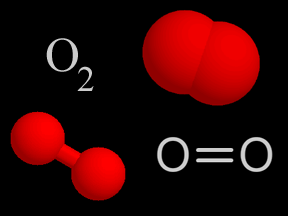Nitrogen (N
2) is the most abundant gas in Earth's atmosphere, including the troposphere. This cartoon also depicts several other tropospheric gases, including oxygen (O
2), carbon dioxide (CO
2), water vapor (H
2O), methane (CH
4), sulfur dioxide (SO
2), and carbon monoxide (CO).
Click on image for full size
Image courtesy UCAR, modified by Windows to the Universe staff (Randy Russell).
Chemical Composition of Earth's Atmosphere
Earth's atmosphere consists of about 78% nitrogen, 20% oxygen, and a mixture of small amounts of numerous other ingredients. Some of the minor constituents do, however, have big impacts. For example, greenhouse gases such as carbon dioxide and methane exert a large influence on the temperature of our planet.
The chemical composition of air varies across the different layers of Earth's atmosphere.
The oceans and the biosphere exchange vast quantities of gases with the atmosphere's lowest layer. The Carbon and Nitrogen Cycles play key roles in these processes.
The activities of humans play an increasingly important role in atmospheric chemistry. Fossil fuel burning generates sulfur oxides, which create sulfuric acid - a component of acid rain. Exhaust gases from cars and trucks produce nitrogen oxides, which contribute to the formation of smog and of nitric acid - another component of acid rain.
You might also be interested in:

Nitrogen is a chemical element with an atomic number of 7 (it has seven protons in its nucleus). Molecular nitrogen (N2) is a very common chemical compound in which two nitrogen atoms are tightly bound
...more
Oxygen is a chemical element with an atomic number of 8 (it has eight protons in its nucleus). Oxygen forms a chemical compound (O2) of two atoms which is a colorless gas at normal temperatures and pressures.
...more
Less than 1% of the gases in Earth's atmosphere are called greenhouse gases. Even though they are not very abundant, these greenhouse gases have a major effect. Carbon dioxide (CO2), water vapor (H2O),
...more
Carbon dioxide is a colorless and non-flammable gas at normal temperature and pressure. Although much less abundant than nitrogen and oxygen in Earth's atmosphere, carbon dioxide is an important constituent
...more
Methane is gas that is found in small quantities in Earth's atmosphere. Methane is the simplest hydrocarbon, consisting of one carbon atom and four hydrogen atoms. Methane is a powerful greenhouse gas.
...more
Chemistry plays an influential role in the behavior of Earth's atmosphere. The various gases in the atmosphere are constantly mixing with and reacting with each other. Gases released by the oceans, emitted
...more
Air pollution comes from many different sources. Natural processes that affect air quality include volcanic activity, which produce sulfur, chlorine, and ash particulates, and wildfires, which produce
...more















